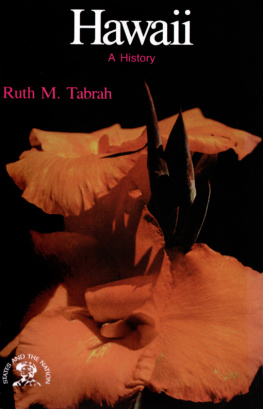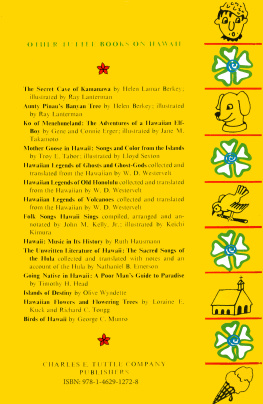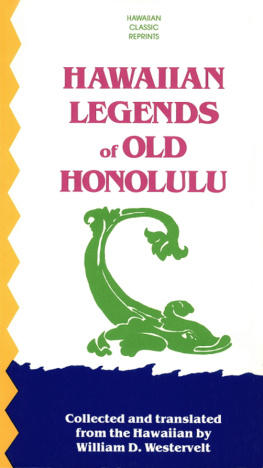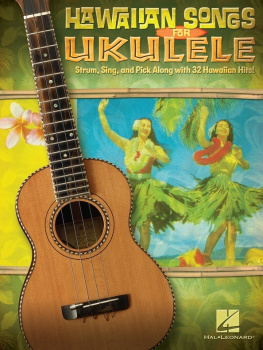THE STATES AND THE NATION SERIES, of which this volume is a part, is designed to assist the American people in a serious look at the ideals they have espoused and the experiences they have undergone in the history of the nation. The content of every volume represents the scholarship, experience, and opinions of its author. The costs of writing and editing were met mainly by grants from the National Endowment for the Humanities, a federal agency. The project was administered by the American Association for State and Local History, a nonprofit learned society, working with an Editorial Board of distinguished editors, authors, and historians, whose names are listed below.

EDITORIAL ADVISORY BOARD
James Morton Smith, General Editor
Director, State Historical Society
of Wisconsin
William T. Alderson, Director
American Association for
State and Local History
Roscoe C. Born
Vice-Editor
The National Observer
Vernon Carstensen
Professor of History
University of Washington
Michael Kammen, Professor of
American History and Culture
Cornell University
Louis L. Tucker
President (19721974)
American Association for
State and Local History
Joan Paterson Kerr
Consulting Editor
American Heritage
Richard M. Ketchum
Editor and Author
Dorset. Vermont
A. Russell Mortensen
Assistant Director
National Park Service
Lawrence W. Towner
Director and Librarian
The Newberry Library
Richmond D.Williams
President (19741976)
American Association for
State and Local History
MANAGING EDITOR
Gerald George
American Association for
State and Local History

There are so many who, knowingly and unknowingly, helped me in the writing of this bicentennial history of Hawaii. To all of them my deepest gratitude: State Archivist Agnes Conrad; Takao Ito; University of Hawaii Hamilton Library Hawaiian-Pacific Collection Curator David Kittelson; Connie Fukumoto: Kiyo Masuda; Joseph K. Mossman; Sung Dai Seu; former Speaker of the House Tadao Beppu; Bishop Yoshiaki Fujitani; Mr. and Mrs. Kinji Kanazawa; Tom McCabe; State Senator Neil Abercrombie; David K. Trask, Jr.; Chief Justice William Richardson; the late David Thompson of ILWU; the family of the late Koji Ariyoshi; Chad Taniguchi; Yasuki Arakaki; Philip Hooton; Duane and Sheila Black and the Florentino Hera family of Lanai; that superb writer of Hawaiiana, Alfons Korn; Hawaii State Librarian Ruth Itamura; the Reverend Darrow K. Aiona; Cecilia Lindho; Alulikis Winona Rubin; Judge William Laube of Monterey, California; Gerald George of the American Association for State and Local History; and all the tremendous reference librarians of Hawaii State Librarys Hawaii and Pacific Room, and the Hilo Public Library. Mahalo nui loa.
Contents
Original Maps by Jean Tremblay
prepared by the editors of the
American Association for State and Local History
Introduction
The following pages offer the reader a guide to places in this state through which its history still lives.
This section lists and describes museums with collections of valuable artifacts, historic houses where prominent people once lived, and historic sites where events of importance took place. In addition, we have singled out for detailed description a few places that illustrate especially well major developments in this states history or major themes running through it, as identified in the text that follows. The reader can visit these places to experience what life was like in earlier times and team more about the states rich and exciting heritage.
James B. Gardner and Timothy C. Jacobson, professional historians on the staff of the American Association for State and Local History, prepared this supplementary material, and the associations editors take sole responsibility for the selection of sites and their descriptions. Nonetheless, thanks are owed to many individuals and historical organizations, including those listed, for graciously providing information and advice. Our thanks also go to the National Endowment for the Humanities, which granted support for the writing and editing of this supplement, as it did for the main text itself. The Editors
Puuhonua o Hnaunau
H naunau
 The royal line of alii or chiefs and the sacred laws of kapu dominated Hawaiian culture before the arrival of foreign settlers and missionaries in the early nineteenth century. As representatives of the gods, the alii presided over the elaborately detailed kapu system that regulated everyday life and buttressed the ancient Hawaiian religion. The punishment for breaking kapu was death, unless the violator could reach a refuge sanctified by the mana or spiritual power of deified chiefs. The most sacred and best preserved such asylum is Puuhonua o H naunau on the island of Hawaii. Now maintained as the Puuhonua o H naunau National Historical Park, this place of refuge and the adjoining ancestral home of the Hawaiian royal family together constitute an impressive reminder of the way life used to be in Hawaii.
The royal line of alii or chiefs and the sacred laws of kapu dominated Hawaiian culture before the arrival of foreign settlers and missionaries in the early nineteenth century. As representatives of the gods, the alii presided over the elaborately detailed kapu system that regulated everyday life and buttressed the ancient Hawaiian religion. The punishment for breaking kapu was death, unless the violator could reach a refuge sanctified by the mana or spiritual power of deified chiefs. The most sacred and best preserved such asylum is Puuhonua o H naunau on the island of Hawaii. Now maintained as the Puuhonua o H naunau National Historical Park, this place of refuge and the adjoining ancestral home of the Hawaiian royal family together constitute an impressive reminder of the way life used to be in Hawaii.

Restored temple house of Hale-O-Keawe
The kapu system formed the structure of Hawaiian life for perhaps a thousand years. This ancient code prescribed the proper conduct for everything from land ownership to sexual relations. Dietary prohibitions were particularly strict, extending to what foods women could eat and dictating separate food preparation and dining by the sexes. Because these laws were believed to be divinely given, violation was an offense to the gods and thus required punishment by death lest an offended god take his revenge out on everyone. No matter what the circumstances or how minor the violation, breaking kapu brought a sentence of death, unless the offender escaped to a place of refuge like that at Puuhonua o H naunau.
The concept of a refuge or asylum hinged on the Hawaiians reverence for mana, the special spiritual power of the high chiefs. The chiefs mana pervaded not just their persons but their possessions and even the ground they walked on. Respect for mana prohibited commoners from walking in a chiefs footsteps, touching his possessions, or letting their shadows fall on the palace grounds. As with other kapu, violation would lead to death. Yet the sanctity of mana also provided the basis for the puuhonua or place of refuge. Mana remained in the bones of dead chiefs and hence sanctified the mausoleum temple or heiau in which these bones were placed. Protected by the dead chiefs mana, these temples came to be regarded as sanctuaries or refuges for breakers of kapu. After a ceremony of absolution performed by the priest or kahuna, the violator could then return home safely, free from danger. Others who sought refuge included defeated warriors awaiting the outcome of battle and noncombatantsthe aged, the young, those unable to protect themselves during the fierce island wars.
Puuhonua o H naunau was one of six such refuges on the island of Hawaii. The sanctuary adjoined the ancestral home of the royal lineage that produced Kamehameha, the great Kohala chief who united all the islands in the early nineteenth century. The palace grounds included a collection of thatched buildings, royal fish ponds, and a royal canoe landing, all forbidden to commoners and protected by warriors. Separating the palace grounds from the refuge was a massive stone wall approximately one thousand feet long, ten feet high, and seventeen feet wide. This wall was erected about 1550, perhaps as a monument to Keawe-ku-i-ke-kaai, the ruling chief at the time. After his death, a
Next page











 The royal line of alii or chiefs and the sacred laws of kapu dominated Hawaiian culture before the arrival of foreign settlers and missionaries in the early nineteenth century. As representatives of the gods, the alii presided over the elaborately detailed kapu system that regulated everyday life and buttressed the ancient Hawaiian religion. The punishment for breaking kapu was death, unless the violator could reach a refuge sanctified by the mana or spiritual power of deified chiefs. The most sacred and best preserved such asylum is Puuhonua o H naunau on the island of Hawaii. Now maintained as the Puuhonua o H naunau National Historical Park, this place of refuge and the adjoining ancestral home of the Hawaiian royal family together constitute an impressive reminder of the way life used to be in Hawaii.
The royal line of alii or chiefs and the sacred laws of kapu dominated Hawaiian culture before the arrival of foreign settlers and missionaries in the early nineteenth century. As representatives of the gods, the alii presided over the elaborately detailed kapu system that regulated everyday life and buttressed the ancient Hawaiian religion. The punishment for breaking kapu was death, unless the violator could reach a refuge sanctified by the mana or spiritual power of deified chiefs. The most sacred and best preserved such asylum is Puuhonua o H naunau on the island of Hawaii. Now maintained as the Puuhonua o H naunau National Historical Park, this place of refuge and the adjoining ancestral home of the Hawaiian royal family together constitute an impressive reminder of the way life used to be in Hawaii.